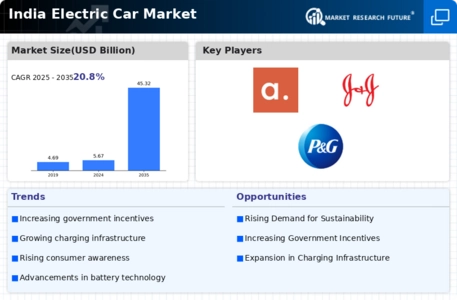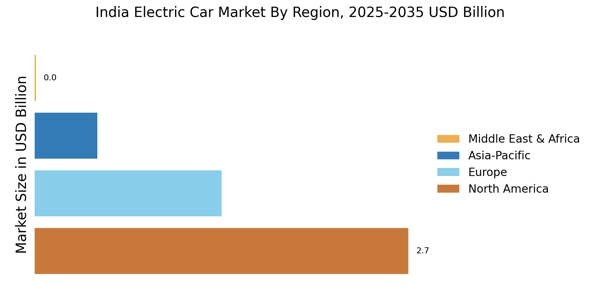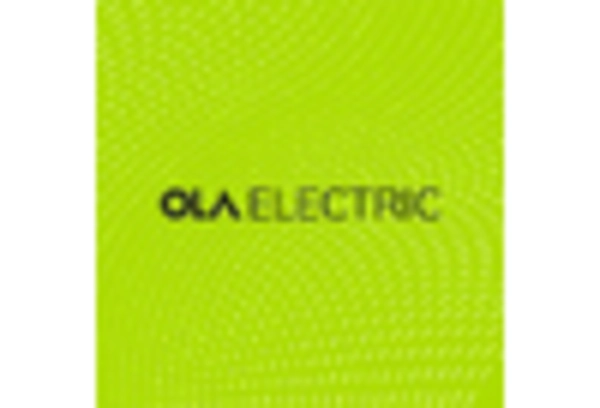The India Electric Car Market is currently characterized by a dynamic competitive landscape, driven by a confluence of technological advancements, regulatory support, and shifting consumer preferences towards sustainable mobility. Major players such as Tata Motors (India), Mahindra & Mahindra (India), and Ola Electric (India) are at the forefront, each adopting distinct strategies to enhance their market positioning. Tata Motors (India) emphasizes innovation through its extensive research and development initiatives, focusing on battery technology and electric vehicle (EV) infrastructure. Meanwhile, Mahindra & Mahindra (India) leverages its established automotive expertise to expand its electric offerings, particularly in the commercial vehicle segment. Ola Electric (India), on the other hand, is rapidly scaling its operations, aiming to disrupt the market with aggressive pricing and a robust charging network. Collectively, these strategies contribute to a competitive environment that is increasingly focused on technological differentiation and customer-centric solutions.
In terms of business tactics, localization of manufacturing and supply chain optimization are pivotal. Companies are increasingly investing in local production facilities to mitigate costs and enhance supply chain resilience. The market structure appears moderately fragmented, with a mix of established automotive giants and emerging startups vying for market share. This fragmentation allows for diverse offerings, yet the collective influence of key players is shaping industry standards and consumer expectations.
In September 2025, Tata Motors (India) announced a strategic partnership with a leading battery manufacturer to enhance its EV production capabilities. This collaboration is expected to streamline battery sourcing, thereby reducing costs and improving the overall efficiency of its electric vehicle lineup. Such a move underscores Tata's commitment to maintaining a competitive edge through innovation in battery technology, which is crucial for the performance and affordability of electric vehicles.
In August 2025, Mahindra & Mahindra (India) unveiled its new electric SUV, which features advanced AI-driven technology for enhanced user experience. This launch not only signifies Mahindra's commitment to electrification but also highlights its focus on integrating cutting-edge technology into its vehicles. The introduction of AI capabilities may attract tech-savvy consumers, positioning Mahindra favorably in a market that increasingly values digital features alongside traditional automotive performance.
In July 2025, Ola Electric (India) expanded its charging infrastructure by partnering with local municipalities to install fast-charging stations across major urban centers. This initiative is critical as it addresses one of the primary barriers to EV adoption—charging accessibility. By enhancing its charging network, Ola Electric is likely to improve consumer confidence in electric mobility, thereby driving sales and fostering a more robust market presence.
As of October 2025, current competitive trends in the India Electric Car Market are heavily influenced by digitalization, sustainability, and the integration of artificial intelligence. Strategic alliances are becoming increasingly vital, as companies recognize the need for collaboration to enhance technological capabilities and market reach. Looking ahead, competitive differentiation is expected to evolve, shifting from traditional price-based competition to a focus on innovation, technological advancements, and supply chain reliability. This transition may redefine market dynamics, compelling companies to prioritize sustainable practices and customer-centric innovations to secure their positions in an ever-evolving landscape.


















Leave a Comment